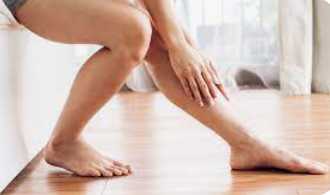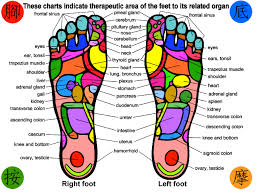Regular care includes:
- Physical activity: Engage in moderate aerobic exercises such as walking, swimming, or cycling to promote blood circulation and muscle contraction to reduce leg swelling.
- Elevate the feet: After prolonged standing or sitting, try elevating the feet to reduce pressure.
- Dietary adjustment: Control salt intake and avoid a high-salt diet as excess salt can lead to fluid retention in the body. Increase the intake of fiber-rich foods such as fruits, vegetables, and whole grains to promote digestion and excretion.
4. Smooth bowel movements: Maintain regular bowel habits and avoid constipation as it can increase abdominal pressure and negatively impact blood circulation.
5. Wear appropriate shoes: Choose suitable shoes, especially those that are comfortable and fit the foot shape, to reduce the burden and pressure on the lower limbs.
6. Use elastic stockings or compression therapy: Elastic stockings or compression therapy socks can provide appropriate pressure.
7. Avoid prolonged immobility: Avoid maintaining the same posture for an extended period, especially prolonged sitting or standing. Move the ankles and calf muscles periodically to promote blood circulation.
8. Massage and hydrotherapy: Soaking the lower limbs in warm or cold water to promote blood circulation and alleviate discomfort in the lower limbs.


Foot massage is a common method for relaxation and body relief, which can promote blood circulation, alleviate fatigue and tension, and improve overall physical and mental well-being. Below are some common techniques and steps for foot massage and reflexology:
- Hygiene: Ensure proper foot hygiene before starting a massage session to avoid any potential infections.
- Foot soaking: Soak both feet in warm water, adding some salt, essential oils, or herbs for enhanced effects. Hot water soaking relaxes muscles and relieves fatigue, while cold water soaking can reduce inflammation and swelling.
- Massage oil or lotion: Reduce friction and increase smoothness during the massage. Plant-based oils or specially designed massage oils and add some essential oils based on personal preferences.
- Foot massage: Use acupressure and muscle manipulation techniques to promote blood circulation, relieve fatigue, and relax tension. Watch the previous video: Common Massage Techniques and Methods (video link in description)
- Massage the soles: Use thumb gliding method to massage the muscles on the soles. Start from the heel, glide along the midline of the sole towards the toes, and then return along the edges of the foot. Pay attention to the depressions on the sole, the arch, and the heel. Repeat several times, gradually covering the entire sole.
- Massage the instep and ankles: Use palm or thumb to gently knead and apply mild pressure on the instep, gradually massaging the entire dorsal region of the foot, focusing on kneading the arch, sole, and toe areas. Gently rotate the ankles to relax the muscles and joints around the foot.
- Massage the toes: From the base to the tips of the toes, use thumb and index finger to gently knead, apply pressure, or stretch each toe, combining acupressure and kneading techniques, flex and extend the toes to stretch the foot’s muscles and ligaments.
- Finish the massage: After about 15-20 minutes of foot massage, gently knead and stroke the feet to relieve tension and aid relaxation.
- Foot reflexology is a massage technique based on the theory of reflex zones, which suggests that different parts of the feet correspond to different organs and systems in the body. By stimulating specific reflex zones on the feet, one can promote bodily health and balance.
- Massage stick or tool to assist with foot massage and stimulate the reflex zones on the feet. Different shapes and textures of massage tools can provide different stimulation effects. Place the massage tool on the ground and then use your feet to roll, press, or move over it.
- Rotational massage: Use your thumb or fingertips to perform rotational massage on the reflex zones.
- Thumb gliding on the reflex zones: Apply moderate pressure and continuous gliding movements to massage the entire reflex zone.
- Foot acupressure: Apply moderate pressure on specific acupoints on the soles based on the reflex zone map to stimulate the corresponding body parts or organs in a circular or linear manner. Press each acupoint for about 5-10 seconds, adjusting the pressure based on personal sensations.
- Foot scraping: Using a special scraping tool to scrape the skin on the soles, promoting blood circulation, stimulating meridians and the nervous system, and improving overall body health.
Remember, foot massage and reflexology can be beneficial for relaxation and well-being, but it’s crucial to be cautious and considerate of individual needs and conditions. If you have any concerns or uncertainties, don’t hesitate to seek professional advice.

